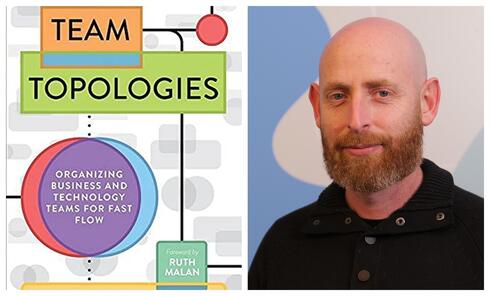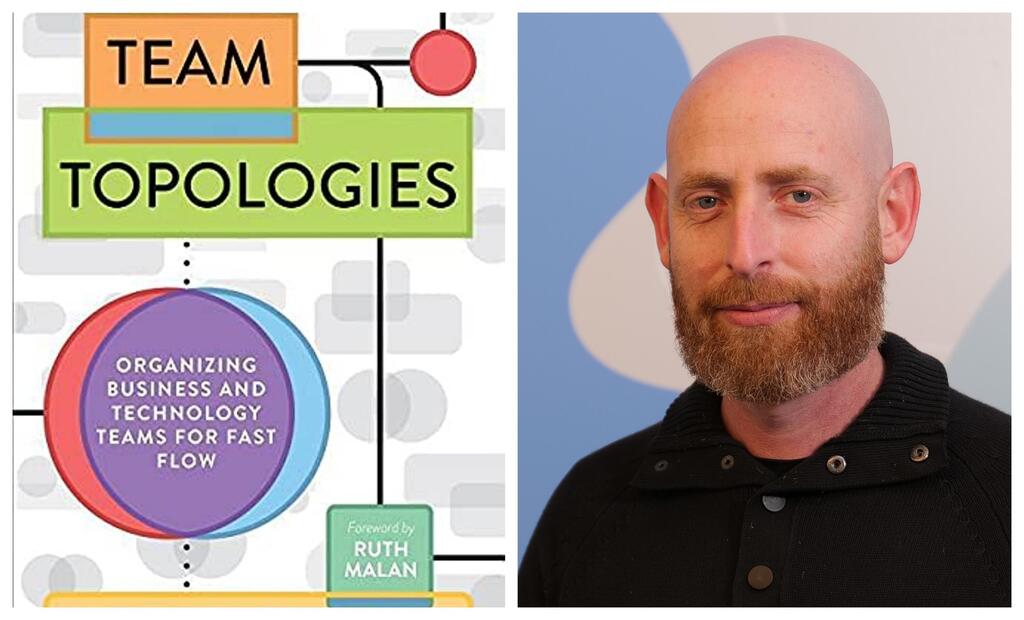
BiblioTech
CTech’s Book Review: The guidebook for building a dream team
Eran Heres, CTO at FireArc Technologies, has joined CTech to share a review of “Team Topologies: Organizing Business and Technology Teams for Fast Flow" by Matthew Skelton and Manuel Pais
Eran Heres is the CTO at FireArc Technologies, a combination of digital assets and products ranging from desktop and mobile applications and utilities. He has joined CTech to share a review of “Team Topologies: Organizing Business and Technology Teams for Fast Flow" by Matthew Skelton and Manuel Pais.
Title: “Team Topologies: Organizing Business and Technology Teams for Fast Flow"
Author: Matthew Skelton and Manuel Pais
Format: Book
Where: Home
Summary:
"Team Topologies: Organizing Business and Technology Teams for Fast Flow" is a book authored by Matthew Skelton and Manuel Pais, which presents an approach to organizing teams for efficient software delivery.
The book proposes four fundamental team topologies: Stream-aligned teams, Enabling teams, Complicated subsystem teams, and Platform teams. These topologies are designed to support a fast flow of work, ensure high-quality software delivery, and enable effective communication and collaboration between teams.
Stream-aligned teams are responsible for the end-to-end delivery of software features or services. Enabling teams helps streamline the delivery process and provides support to stream-aligned teams. Complicated subsystem teams work on complex areas of the system and collaborate with stream-aligned teams. Platform teams build and maintain shared platforms and infrastructure for other teams to use.
The book also emphasizes the importance of identifying and addressing team cognitive load and provides guidance on how to scale the team topologies as the organization grows. Overall, "Team Topologies" offers a comprehensive guide to creating a team structure that enables fast, efficient, and high-quality software delivery.
Important themes:
"Team Topologies" is a book that takes a fresh approach to organizing business and technology teams. It's like a guidebook for building your own dream team, but instead of drafting players, you're crafting teams that can deliver results quickly and effectively.
The authors break down traditional team structures and offer a new model based on four team types that sound more like superhero teams than work teams: Stream-aligned teams, Enabling teams, Complicated-subsystem teams, and Platform teams.
The book is packed with practical tips on how to balance autonomy and coordination, how to adapt team structures to meet changing business needs, and how to create a culture of continuous improvement. It's like a roadmap for building a team that can weather any challenge and comes out on top.
There are several main themes the book is covering:
- Team Topologies: The book presents four fundamental team topologies that can be used to organize teams for efficient software delivery: Stream-aligned teams, Enabling teams, Complicated subsystem teams, and Platform teams. Each topology has a specific role to play in the delivery process, and the book provides guidance on how to implement and manage these topologies effectively.
- Cognitive Load: The authors stress the importance of reducing cognitive load on teams to improve efficiency and reduce errors. They provide practical advice on how to identify and address cognitive load issues, such as by reducing handovers, simplifying processes, and providing better tooling.
- Organizational Culture: The book explores the role of organizational culture in enabling a fast flow of work. The authors emphasize the importance of a culture that supports learning, experimentation, and continuous improvement, and provide guidance on how to foster this culture within teams and organizations.
- Communication and Collaboration: Effective communication and collaboration are essential for successful software delivery. The book provides practical advice on how to improve communication and collaboration between teams, such as by using clear communication channels, building trust, and fostering a collaborative mindset.
- Scaling Team Topologies: The book addresses the challenges of scaling team topologies as organizations grow. The authors provide guidance on how to adapt team topologies to different organizational contexts, such as by using nested topologies or federated approaches.
What I’ve learned:
"Team Topologies" is a must-read book for anyone looking to improve their team's productivity and effectiveness. As someone who has worked in various team structures, I found the authors' insights and recommendations incredibly helpful. The book challenges the traditional way of organizing teams and provides a new model based on four essential team types that can be customized to fit an organization's unique needs.
What I appreciated most about the book was its practical approach. The authors not only explain the benefits of each team type but also provide guidance on how to implement them. They offer suggestions for team size, team composition, and how to balance the autonomy of the teams with the overall coordination needed to achieve business goals.
One of the key takeaways from the book is the importance of evolving team structures over time. As organizations grow and change, so do their team structures. The authors provide strategies for adapting team structures to meet changing business needs, which I found particularly relevant in today's rapidly changing business environment.
Overall, "Team Topologies" is an insightful and practical guide that has the potential to transform the way teams work together and deliver value to the business. I highly recommend it to anyone looking to optimize their team's performance and create a more collaborative and productive work environment.
Critiques:
It is mostly focused on software development organization. HW/SW organizations, operation oriented companies might find this book less relevant. The same goes for very small (less than 10) developers companies who do not see a future of growth in their headcount.
Who should read this book:
This book can benefit anyone involved in software delivery, including CTOs, team leaders, architects, developers, and DevOps professionals. It provides practical guidance on team organization and software delivery processes that can help optimize team structure and improve efficiency. Overall, the book is a valuable resource for anyone looking to improve their software delivery processes and optimize their team structure for fast flow.















